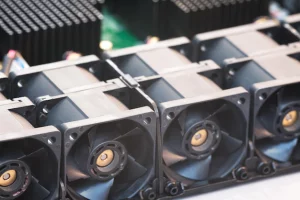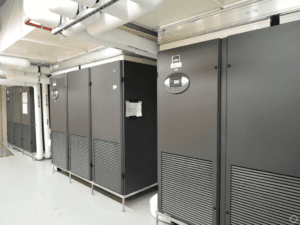Server cooling solutions are vital for maintaining optimal performance and energy efficiency in your data centre. At EziBlank, we understand that effective airflow management can significantly reduce overheating and lower power consumption, resulting in substantial savings for your business. Our innovative blanking panels are designed for quick and easy installation, helping you maximise your infrastructure investment while enhancing the reliability of your server operations. Elevate your data centre’s efficiency today with EziBlank—where smart design meets practical energy solutions.
How airflow works inside of a server
Airflow inside a server is meticulously designed to ensure that the hardware operates within safe temperature ranges, which is critical for maintaining performance and preventing overheating. Cool air is typically drawn in from the front of the server through intake fans, passes over the heat-generating components such as the CPU, memory, and hard drives, and is then expelled as hot air through exhaust fans at the back of the server. This controlled airflow ensures that each component receives the cooling it needs. Effective airflow management within the server, complemented by data centre solutions like blanking panels, helps maintain optimal operating conditions, extends the lifespan of the equipment, and reduces the overall energy required for cooling.
Read More
Hot Aisle vs Cold Aisle Containment
Hot aisle and cold aisle containment are two critical strategies used in data centres to enhance cooling efficiency and reduce energy consumption. In a cold aisle containment setup, cold air is contained within the aisle where the fronts of the server racks face each other, ensuring that only cool air is delivered directly to the equipment. This prevents the mixing of cold air with hot exhaust air, improving cooling efficiency. Conversely, hot aisle containment involves enclosing the aisle where the backs of the servers expel hot air. This containment captures and directs the hot air back to the cooling systems, preventing it from mixing with the cool air in the room. Both methods are effective, but the choice between hot and cold aisle containment depends on the specific design and cooling needs of the data centre. Implementing either strategy can lead to significant improvements in energy efficiency and overall system performance.
Read More
The Complete Guide to Data Center Cooling
Effective data centre cooling is essential for maintaining the reliability and efficiency of IT infrastructure. Key strategies include optimising airflow through techniques like hot and cold aisle containment, which separates hot and cold air to enhance cooling efficiency. Blanking panels are used to fill unused rack spaces, preventing hot air recirculation and ensuring cool air reaches where it's needed most. Advanced technologies like liquid cooling, which circulates coolant directly to hot components, and free cooling, which utilises natural cold air or water, further reduce energy consumption. Real-time monitoring of temperature and humidity allows for precise control, ensuring optimal conditions while minimising energy use. Together, these approaches protect equipment, lower operational costs, and contribute to a more sustainable data centre.
Read MoreKnow Your Data Centre Cooling
Understanding your data centre cooling system is essential for maintaining optimal performance and energy efficiency. Effective cooling strategies are crucial in preventing overheating, which can lead to equipment failure and costly downtime. Key aspects of data centre cooling include airflow management, where techniques like hot and cold aisle containment and the use of blanking panels help to direct cool air to the right places while preventing hot air recirculation. Additionally, advanced cooling technologies such as liquid cooling or free cooling can further enhance efficiency by reducing reliance on traditional air conditioning. Regular monitoring of temperature and humidity levels is also critical, allowing for real-time adjustments to maintain optimal conditions. By knowing and optimising your data centre's cooling, you can significantly reduce energy consumption, lower operational costs, and ensure the long-term reliability of your IT infrastructure.
Read More
